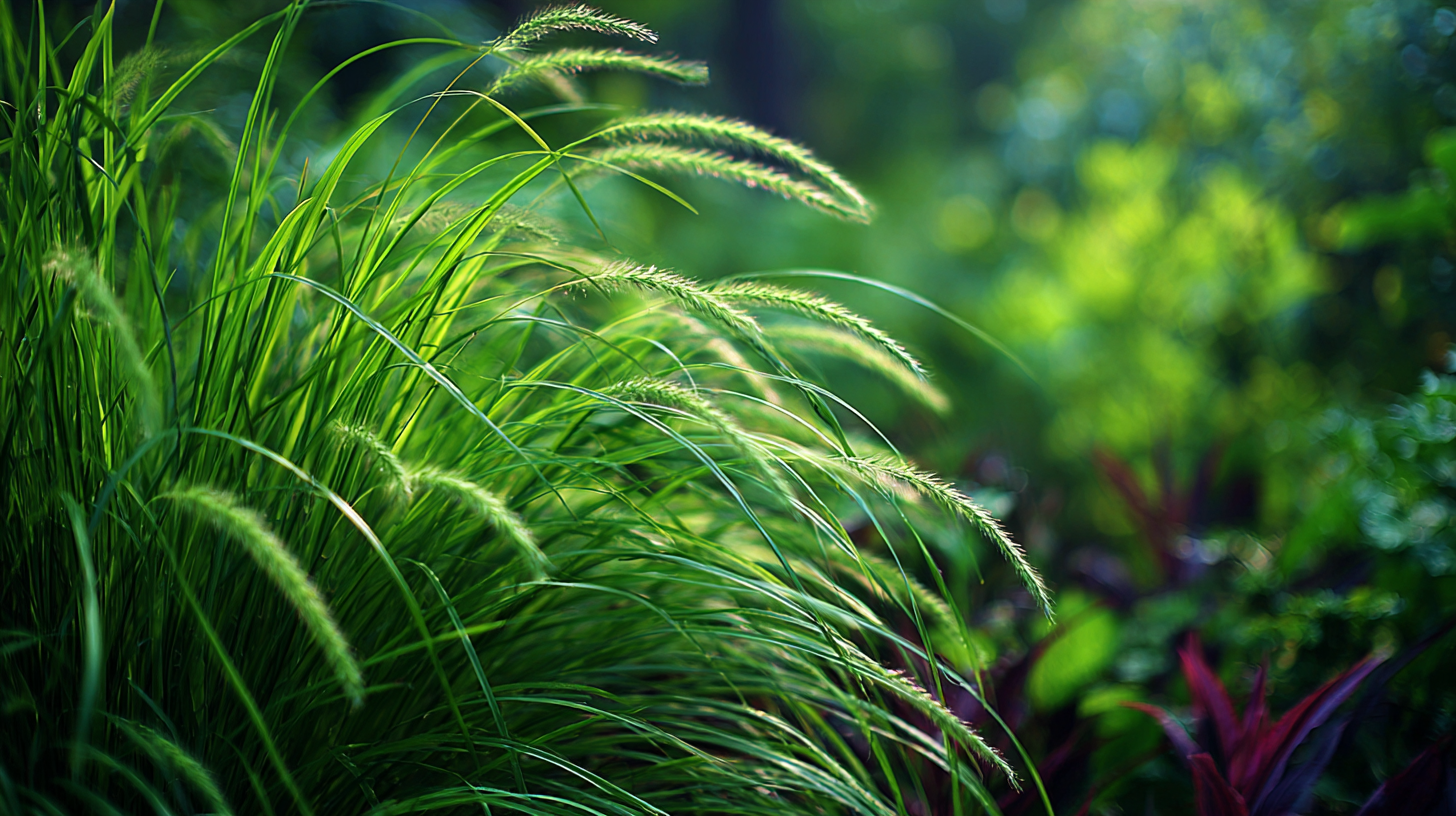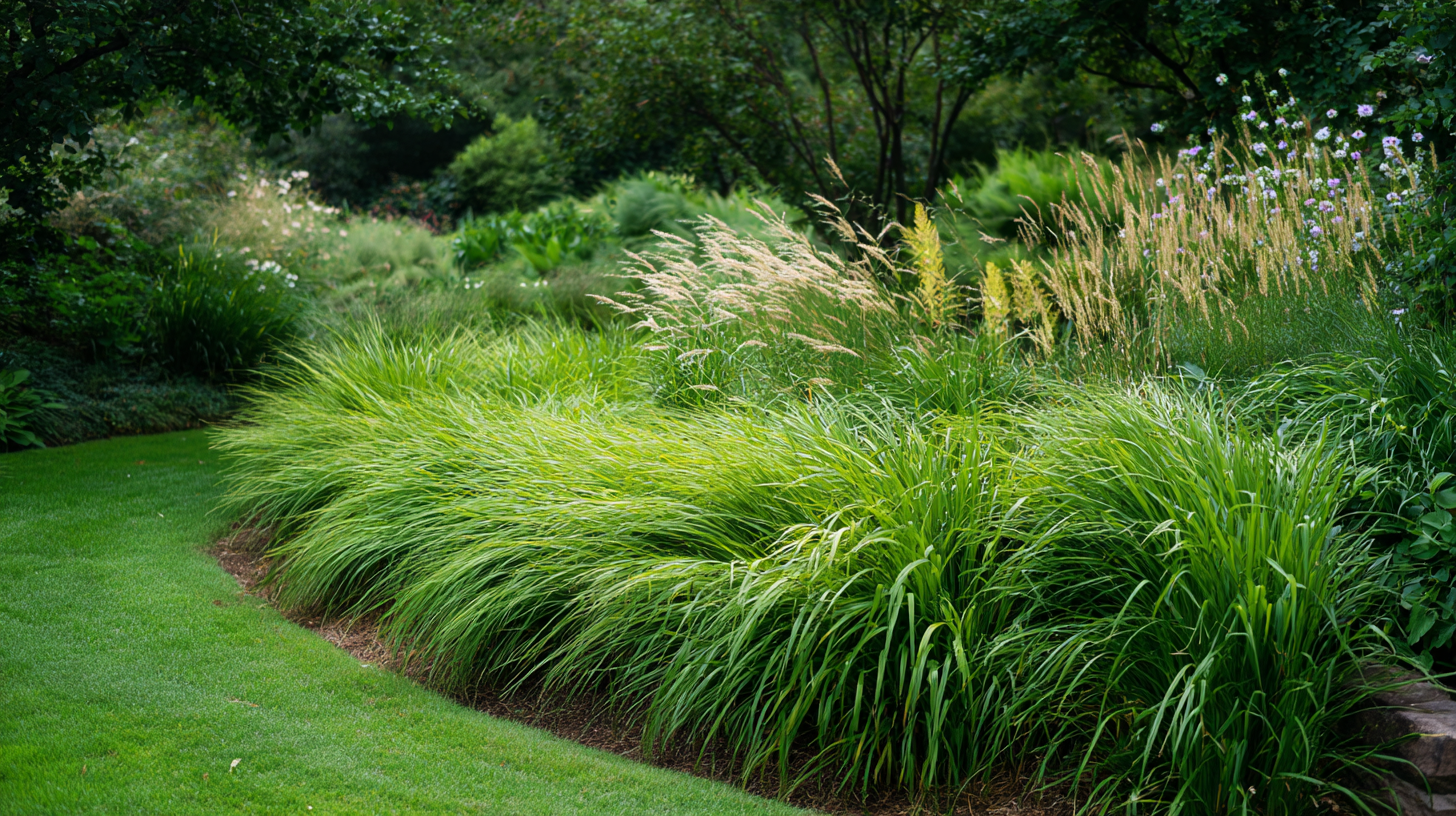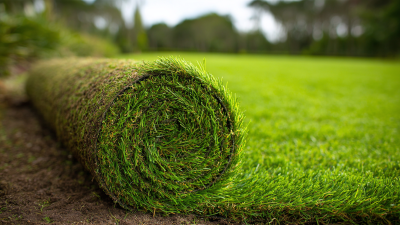When selecting the optimal garden grass for your landscape, it is crucial to consider both local climate conditions and soil type. According to the National Gardening Association, over 90 million Americans engage in gardening activities, with grass lawns representing one of the most common features in residential spaces. The success of a garden grass variety relies on its ability to thrive in specific environmental conditions, such as temperature fluctuations and moisture levels.

Research from the Turfgrass Council reveals that selecting appropriate grass varieties can reduce water consumption by up to 30%, thereby promoting sustainability. Additionally, understanding your soil composition, whether sandy, clay, or loamy, is vital, as it directly influences drainage and nutrient availability. By aligning your choice of garden grass with these factors, you can create a lush, resilient lawn that flourishes throughout the seasons.
When selecting the best garden grass, understanding the local climate is crucial. Different grasses thrive in various conditions; for example, cool-season grasses such as Kentucky bluegrass flourish in northern regions with cold winters, while warm-season grasses like Bermuda thrive in the southern regions with hot, humid summers. Recognizing your climate zone and seasonal temperatures will guide you in choosing a grass variety that grows vigorously and remains healthy throughout the year.
**Tips:** Consider conducting a soil test to assess pH levels and nutrient content, as this can significantly influence grass health. Moreover, observe your region’s precipitation patterns; drought-resistant varieties may be necessary in areas prone to low rainfall, ensuring that your lawn stays lush and vibrant without excessive water use. Additionally, local grass recommendations from gardening centers can provide insights tailored to your environment, helping you make a more informed decision.
This chart illustrates the suitability scores of various grass types for different conditions found in local climates and soil types. A higher score indicates better adaptability to local conditions.
 When selecting the best garden grass, understanding your local soil type is crucial. Different soils have varying drainage capabilities, nutrient levels, and pH balances, all of which impact grass growth. Common soil types include sandy, clay, loamy, and silt. Sandy soil drains quickly, making it ideal for drought-resistant grasses, while clay soil retains moisture but can lead to compaction issues. Loamy soil strikes a balance, often considered the best for a diverse range of grasses.
When selecting the best garden grass, understanding your local soil type is crucial. Different soils have varying drainage capabilities, nutrient levels, and pH balances, all of which impact grass growth. Common soil types include sandy, clay, loamy, and silt. Sandy soil drains quickly, making it ideal for drought-resistant grasses, while clay soil retains moisture but can lead to compaction issues. Loamy soil strikes a balance, often considered the best for a diverse range of grasses.
Tips for choosing grass based on soil type: Before planting, conduct a soil test to determine its pH and nutrient composition. If your soil is sandy, consider grasses like fescue or Bermuda, which thrive in well-drained conditions. For clay soils, opt for varieties such as Kentucky bluegrass or tall fescue, known for better tolerance of compacted soils. Adjusting the soil with organic matter can enhance its structure, promoting healthy grass growth.
Remember, climate also plays a part in grass selection. Cool-season grasses flourish in northern regions while warm-season varieties are better suited for southern climates. Matching your grass choice with both soil and climate will lead to a robust and lush lawn.
When evaluating grasses for optimal performance in your garden, understanding the differences between cool-season and warm-season grasses is crucial, particularly in relation to your local climate and soil type. Cool-season grasses, thriving in northern climates, offer excellent growth during the cooler months but can struggle during the heat of summer. Conversely, warm-season grasses are designed for hotter environments, making them ideal for southern regions. Recent research indicates that utilizing warm-season grasses not only increases the grazing season for livestock but also enhances forage quality. This is especially important for farmers facing challenges such as drought, which can severely impact the viability of cool-season varieties.

Furthermore, warm-season grasses like bermudagrass and zoysiagrass are gaining attention for their drought resilience and lower water needs. As agricultural practices shift towards sustainability and efficiency, selecting the right type of grass is not only beneficial for maintaining healthy lawns but also vital for livestock production. The strategic choice between cool-season and warm-season grasses can ultimately influence both garden aesthetics and agricultural productivity, making it essential for gardeners and farmers alike to assess their specific climate and soil conditions before making a decision.
When selecting the best garden grass for your local climate and soil type, it’s essential to consider the specific regional climate zones, as different varieties thrive under varying conditions. In cooler northern regions, cool-season grasses like Kentucky bluegrass and fescue are popular choices. These grasses prefer the cooler temperatures of spring and fall, providing vibrant green lawns throughout the cooler months. Their deep roots make them resilient to drought when temperatures rise in the summer.
In contrast, warmer southern climates favor warm-season grasses such as Bermuda and Zoysia. These strains flourish in the heat of summer and can endure periods of drought, making them ideal for regions with prolonged warm weather. Additionally, they typically go dormant in cooler winter months, which is acceptable given the seasonal temperature shifts in these areas. By choosing the right grass variety based on your climate zone, you can enhance the beauty and health of your garden while ensuring that your lawn remains lush and vibrant throughout the year.
| Grass Variety | Best Climate Zone | Soil Type | Sun Requirements | Maintenance Level |
|---|---|---|---|---|
| Kentucky Bluegrass | Cool Season | Loamy or Clay | Full Sun to Partial Shade | Medium |
| Bermudagrass | Warm Season | Sandy or Clay | Full Sun | High |
| Fescue | Cool Season | Loamy or Clay | Partial Shade | Low |
| Zoysiagrass | Warm Season | Sandy or Clay | Full Sun to Partial Shade | Medium |
| Tall Fescue | Transition Zone | Clay or Loamy | Full Sun | Low |
When selecting the best garden grass for your local climate and soil type, it is essential to consider the adaptability of sustainable grass types in the face of environmental changes. Different regions face unique temperature fluctuations, rainfall patterns, and soil conditions, which can significantly impact grass health and resilience. For instance, native grass varieties are often a great choice for promoting sustainability, as they are accustomed to local climates and require less water and maintenance once established.
Furthermore, as climate change continues to alter weather patterns, choosing grass varieties that can withstand drought or heavy rainfall becomes crucial. Some sustainable options include fescue or bluestem grasses, which have deep root systems that enhance soil stability and moisture retention. Additionally, these grasses can thrive in varying conditions, making them a practical choice for gardeners seeking environmentally friendly options that harmonize with their local ecosystem. By prioritizing adaptability and sustainability, gardeners can create resilient landscapes that not only look beautiful but also contribute positively to the environment.












